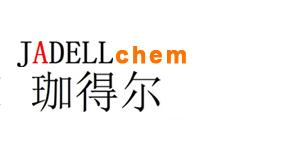Recombinant Human RANK L/TNFSF11 是来源于 E. coli 的 TNF 相关的活化诱导细胞因子。Recombinant Human RANK L/TNFSF11 诱导 JNK 的激活,增强 T 细胞生长和树突细胞功能,诱导破骨细胞生成和淋巴结器官生成。
Synonyms
rHuRANK L/TNFSF11; TRANCE; CD254
Species
HumanSource
E. coli Accession
O14788 Gene ID
8600 Molecular Weight
Approximately 22.4 kDa AA Sequence
IRAEKAMVDG SWLDLAKRSK LEAQPFAHLT INATDIPSGS HKVSLSSWYH DRGWAKISNM TFSNGKLIVN QDGFYYLYAN ICFRHHETSG DLATEYLQLM VYVTKTSIKI PSSHTLMKGG STKYWSGNSE FHFYSINVGG FFKLRSGEEI SIEVSNPSLL DPDQDATYFG AFKVRDID Biological Activity
The ED50 is 0.15 μg/mL as measured. Appearance
Lyophilized powder. Formulation
Lyophilized after extensive dialysis against 20 mM Tris and 150 mM NaCl, pH 8.0. Endotoxin Level
<1.0 EU/μg, determined by LAL method. Reconstitution
Reconstitute the lyophilized recombinant Human RANK L/TNFSF11 (rHuRANK L/TNFSF11) to 100 µg/mL using ddH2O. Storage & Stability
Lyophilized recombinant Human RANK L/TNFSF11 (rHuRANK L/TNFSF11) is stored at -20°C. After reconstitution, it is stable at 4°C for 1 week or -20°C for longer. It is recommended to freeze aliquots at -20°C or -80°C for extended storage. Shipping
Room temperature in continental US; may vary elsewhere. Background
Receptor activator of NF-κB ligand (RANKL), its cellular receptor, receptor activator of NF-κB (RANK), and the decoy receptor osteoprotegerin (OPG) constitute a novel cytokine system. RANKL produced by osteoblastic lineage cells and activated T lymphocytes is the essential factor for osteoclast formation, fusion, activation, and survival, thus resulting in bone resorption and bone loss. RANKL activates its specific receptor, RANK located on osteoclasts and dendritic cells, and its signaling cascade involves stimulation of the c-jun, NF-κB, and serine/threonine kinase PKB/Akt pathways[1]. |



